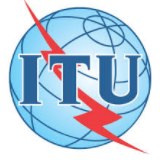2009 ITU e-Government Implementation Toolkit: A Framework for e-Government Readiness and Action Priorities
This paper on e-government readiness assessment serves as an introduction to the “ITU e-Government Implementation Toolkit”. The Toolkit, to be developed in several modules, will examine key dimensions of the e-government environment to help decision makers identify priority areas for action, based on their level of readiness and national development strategies.
The e-Government Readiness Assessment Framework aims to assist decision makers from low, lower middle and upper middle income countries in determining the condition of e-government in their countries; comparing it to the status of e-government in other economies, and identifying priority areas for further action. To this end, the framework provides a comprehensive overview of publicly and freely available data, collected by United Nations agencies, international finance institutions, business organisations and non-governmental organisations (NGOs), which can be used to understand the e-government readiness of a country. Our purpose is not to collect new data, but to promote the understanding and use of existing e-government data collections by calling attention to the aspects they provide information about, as well as to their strengths and weaknesses.
Rapor: ITU eGovernment Implementation Toolkit
Tarih: 2009









